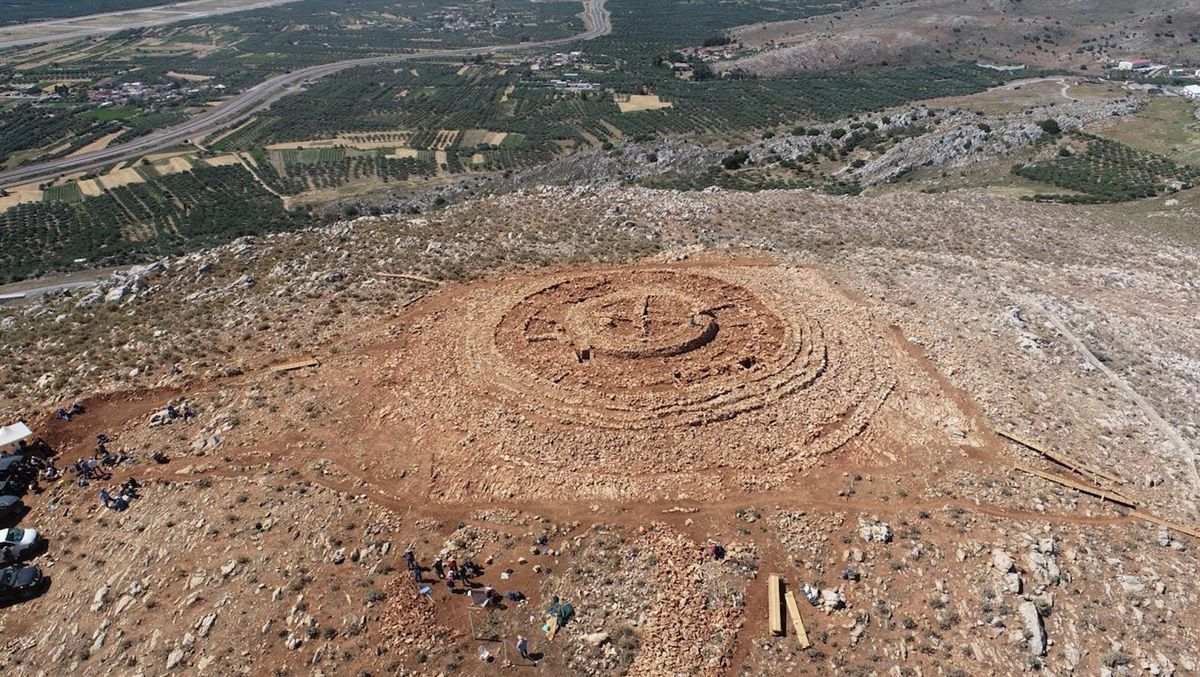A 4,000-year-old circular structure discovered on a hilltop in Greece may have been used for ancient Minoan rituals, archaeologists report.
Consisting of eight superimposed stone rings with small walls intersecting them to form rooms, the building is almost labyrinthine, representatives from the Greek Ministry of Culture said in a translated statement released Tuesday (June 11), hinting at the legendary maze built for King Minos of Crete.
The unique structure, which measures 157 feet (48 meters) in diameter, was discovered about 32 miles (51 kilometers) southeast of Heraklion, the capital of Crete, while construction workers were installing a surveillance radar system for a new airport. Located on the very top of a hill near the town of Kastelli, the ancient building appears to have had two main zones: a circular building with a diameter of 49 feet (15 m) at the very center and an area created by the walls radiating out from it.
Based on the style of pottery fragments discovered during the excavation, archaeologists have tentatively dated the building to 2000 to 1700 B.C., in the middle of the Minoan civilization. Between about 3000 and 1100 B.C., the Minoans created one of the first complex European cultures on the island of Crete — leaving behind examples of their elaborate pottery, figurines, jewelry and frescoes — but their main written language has never been fully deciphered.
Related: 2,800-year-old figurines unearthed at Greek temple may be offerings to Poseidon
After their civilization collapsed, the Minoans were largely forgotten until archaeological work in the early 20th century by Sir Arthur Evans, who coined the term “Minoan” after the mythological King Minos. The ancient palace Knossos is the best known example of Minoan architecture, with a central open space flanked by wings of dozens of smaller rooms connected by corridors. Despite generally being called “palaces,” though, these massive Minoan structures were primarily areas for local administrative activities rather than royal residences.
The newly discovered building near Kastelli was similarly unlikely to have been used as a residence, according to the statement from the Ministry of Culture. Rather, the presence of many animal bones among other finds suggests periodic use of the building for community-wide ritual feasts that involved food, wine and other offerings.
The Kastelli structure, however, does not have an exact parallel with other ancient monumental buildings. Whereas palaces like Knossos were arranged in a square or rectangular fashion, the newly discovered structure is circular, a shape found more often in Minoan tombs.
Because archaeological work on the building is still in progress, researchers do not yet know its exact shape or height. Additional research is planned, in collaboration with the Greek Ministry of the Interior and the Hellenic Civil Aviation Authority, to figure out exactly what the mysterious building was used for and to protect it for future study.




















Discussion about this post